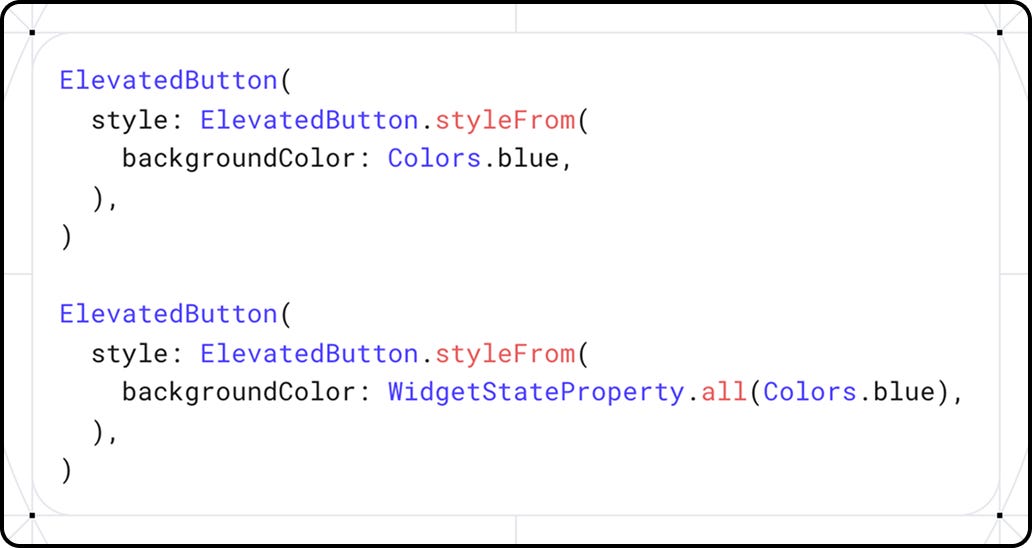Why WidgetStateProperty? The Simple Answer to a Fair Question
Why Flutter's WidgetStateProperty feels unnecessarily complex for simple tasks like changing button colors, the design decisions behind it and practical ways to reduce boilerplate code in your project
You open your Flutter project, ready to change a button color from blue to green. Five minutes later, you're staring at WidgetStateProperty.all() wondering why something so simple requires so much code. This frustration makes perfect sense.
WidgetStateProperty feels like unnecessary complexity when you just want to change a simple color. Here's why Flutter introduced this pattern and how to work with it better.
Why Flutter Created This Problem
Before Material 3, Flutter handled widget states inconsistently. Buttons used MaterialStateProperty, text fields had their own approach, and other widgets did something different. You had to learn multiple patterns for the same basic functionality.
WidgetStateProperty exists because modern apps need widgets that respond to user interactions. When someone presses a button, hovers over it, disables it, or focuses on it, they expect visual feedback. Flutter needed one system to handle these state changes across all widgets.
The Old Way vs The New Way
The first one is old and second is new way.
The extra verbosity feels unnecessary when you just want a static color. However, this new approach gives you precise control over every possible state without learning different APIs for different widgets.
How to Reduce the Pain
Flutter gives you shortcuts to cut down the extra code. For simple cases where you want the same value everywhere, use WidgetStateProperty.all():
For more control, use WidgetStateProperty.resolveWith():
Make It Reusable
Create helper methods or extensions to avoid repeating yourself. You can make a simple extension:
Then use it like this:
The Real Reason
Flutter picks consistency and flexibility over simplicity in individual cases. WidgetStateProperty makes every widget that can have different states use the same pattern. Once you learn it for buttons, you already know how to use it for checkboxes, text fields, and any other widget that changes based on user interaction.
Flutter assumes most real apps will need different styling for different states eventually. Instead of making you rewrite code later when you need more complex behavior, it starts with the powerful pattern from the beginning.
How to Live With It
Accept that extra code is the price for Flutter's consistency and power. Build helper methods, extensions, or custom themes to reduce repetition in your app. Remember that this pattern becomes useful the moment you need different colors for pressed, hovered, or disabled states.
Your frustration makes sense. Understanding why Flutter works this way helps you work with it instead of against it.









You should probably use WidgetStatePropertyAll instead of WidgetStateProperty.all as the former has a const constructor.